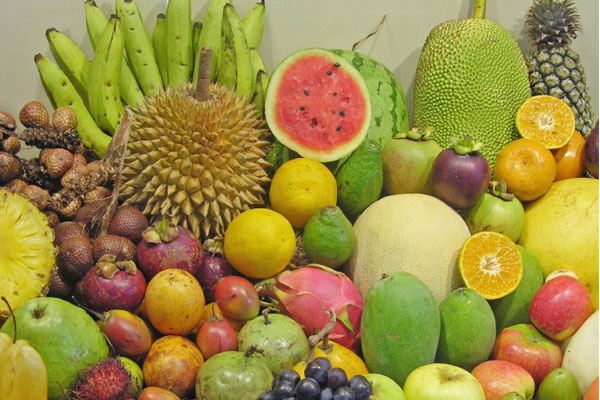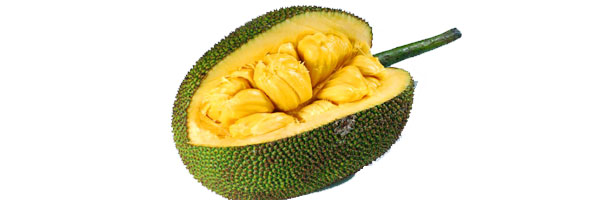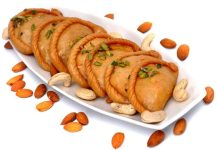Throughout Indonesia, You’ll find unusual and succulent fruit, worthy of any palate. Enormous oranges ranging in color from flame to dark green, mangoes of more than ten varieties, several kinds of more bananas, coconuts, pineapples, melons and mandarins, and not forgetting the pearly mangosteen (Queen Victoria once offered a prize to anyone who could bring this fruit in good condition to England) or the “smelly” Durian, said to be the only fruit that tigers eat. Some durian-lovers journey for miles to buy the fruit when it is out of miles others, repulsed by its odor, refuse to allow it to be brought near homes!
Some rare and unusual fruits in Indonesia here >>
There is a wonderful variety of delicious fruit to be found in Indonesia. Much of it is seasonal, while other fruits are available all year round. Many of the varieties of fruit that you are familiar with back home are also found in Jakarta supermarkets, either imported from other countries or local varieties of the same fruits. If you have never lived in a tropical climate before, you will no doubt see some fruit here that is a complete mystery to you. Below we will give you some idea of the local fruit, what it is called in Indonesian and English, and how to eat it!
Banana
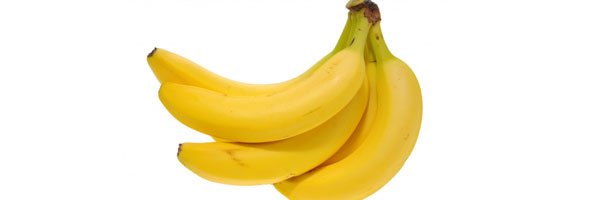 The most common and cheap fruit in Indonesia is the banana (pisang). There is a wide variety of bananas, from the tiny, sweet pisang mas to the large pisang tanduk or plantain used for making banana fritters (pisang goreng). Pisang kepok and pisang raja are also good for making banana fritters, pisang susu is a kind of small starchy banana with light yellow skin and pisang Ambon is the kind of banana that is most commonly eaten in western countries. Just peel and eat! Believe it or not, pisang raja serai is good eaten with a slice of cheese!
The most common and cheap fruit in Indonesia is the banana (pisang). There is a wide variety of bananas, from the tiny, sweet pisang mas to the large pisang tanduk or plantain used for making banana fritters (pisang goreng). Pisang kepok and pisang raja are also good for making banana fritters, pisang susu is a kind of small starchy banana with light yellow skin and pisang Ambon is the kind of banana that is most commonly eaten in western countries. Just peel and eat! Believe it or not, pisang raja serai is good eaten with a slice of cheese!
Papaya
 Pawpaw (papaya) is also cheap and available all year round and is very healthy for you. The size and shape can vary and the skin can either be smooth and yellow or slightly rough and green and yellow striped. The flesh inside is yellow or orange. Remove the skin and discard the round black seeds. Cut in slices or chunks, and for extra flavor serve with a squeeze of lime. Keep unused portion of pawpaw in the refrigerator.
Pawpaw (papaya) is also cheap and available all year round and is very healthy for you. The size and shape can vary and the skin can either be smooth and yellow or slightly rough and green and yellow striped. The flesh inside is yellow or orange. Remove the skin and discard the round black seeds. Cut in slices or chunks, and for extra flavor serve with a squeeze of lime. Keep unused portion of pawpaw in the refrigerator.
Pineapples
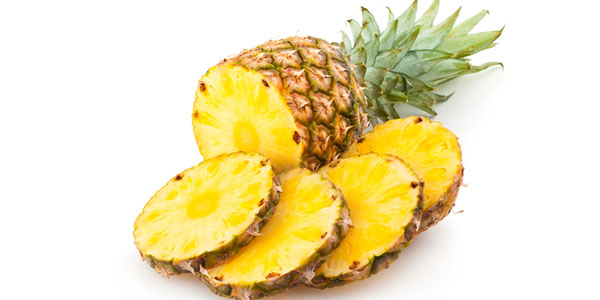 There are three varieties of pineapple (nanas) named according to their place of origin. Most common are nanas Palembang, normal size but elongated, sweet but not very juicy. Nanas Subang or nanas madu (honey pineapple) is more expensive but much juicier and has a fatter shape. Nanas Bogor is a small, golden skinned variety that is very sweet but dry. Pare the skin with a sharp knife, slice or cut into chunks.
There are three varieties of pineapple (nanas) named according to their place of origin. Most common are nanas Palembang, normal size but elongated, sweet but not very juicy. Nanas Subang or nanas madu (honey pineapple) is more expensive but much juicier and has a fatter shape. Nanas Bogor is a small, golden skinned variety that is very sweet but dry. Pare the skin with a sharp knife, slice or cut into chunks.
Citrus fruit (jeruk)
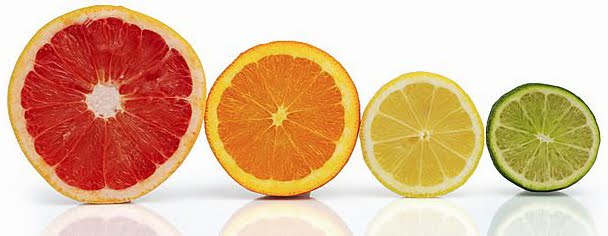 Indonesia also has many varieties of citrus fruit (jeruk). The largest is Jeruk Bali, pomelo or shaddock, which is a seasonal fruit. It is larger than a grapefruit and has green skin and a thick whitish membrane, which is peeled or cut off to expose segments of pink or yellowish pulp. Remove the skin and the pips from each segment. Jeruk Manis is the Indonesian version of an orange, but the outer skin is green when the fruit is ripe. They are good to squeeze for juice. Jeruk Garut is a green or orange colored tangerine. Its skin is loose so it’s easy to peel and it is juicy and sweet. Jeruk Peres is a smaller juicy tangelo that is ideal for juice. Jeruk Nipis or lime is about the size of a golf ball and can be used for drinks or as a flavoring. Lemons are usually imported but a local variety is called Jeruk Sitrun. The tiniest of the jeruk family is Jeruk Limo or Jeruk Sambal, which has a rough green skin, and sharp flavor and is used in cooking.
Indonesia also has many varieties of citrus fruit (jeruk). The largest is Jeruk Bali, pomelo or shaddock, which is a seasonal fruit. It is larger than a grapefruit and has green skin and a thick whitish membrane, which is peeled or cut off to expose segments of pink or yellowish pulp. Remove the skin and the pips from each segment. Jeruk Manis is the Indonesian version of an orange, but the outer skin is green when the fruit is ripe. They are good to squeeze for juice. Jeruk Garut is a green or orange colored tangerine. Its skin is loose so it’s easy to peel and it is juicy and sweet. Jeruk Peres is a smaller juicy tangelo that is ideal for juice. Jeruk Nipis or lime is about the size of a golf ball and can be used for drinks or as a flavoring. Lemons are usually imported but a local variety is called Jeruk Sitrun. The tiniest of the jeruk family is Jeruk Limo or Jeruk Sambal, which has a rough green skin, and sharp flavor and is used in cooking.
Avocado
 Indonesian avocados are plentiful and delicious. Called alpokat, apokat or alpukat, they have green skin when ripe. Cut in half and remove the large stone, then scoop out the soft green or yellowish flesh. Indonesians usually use avocados to make a sweet iced drink with chocolate and condensed milk.
Indonesian avocados are plentiful and delicious. Called alpokat, apokat or alpukat, they have green skin when ripe. Cut in half and remove the large stone, then scoop out the soft green or yellowish flesh. Indonesians usually use avocados to make a sweet iced drink with chocolate and condensed milk.
Melons
 Melons are also relatively inexpensive and always available. Watermelon (semangka) is round in shape with dark green skin and pinkish red flesh or striped light and dark green skin with yellow flesh. The taste of both varieties is similar. Smaller sized green melons with yellowish skin can also be found and are called in Indonesian melon.
Melons are also relatively inexpensive and always available. Watermelon (semangka) is round in shape with dark green skin and pinkish red flesh or striped light and dark green skin with yellow flesh. The taste of both varieties is similar. Smaller sized green melons with yellowish skin can also be found and are called in Indonesian melon.
Blewah
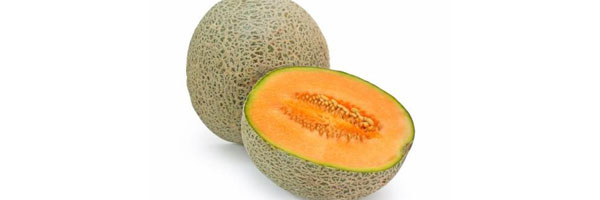 Blewah is a kind of cantaloupe melon with yellow mottled and grooved skin and orange flesh that is usually made into an iced drink. During the Islamic fasting month another kind of pale yellow melon called Timun Suri is commonly sold at roadside stalls.
Blewah is a kind of cantaloupe melon with yellow mottled and grooved skin and orange flesh that is usually made into an iced drink. During the Islamic fasting month another kind of pale yellow melon called Timun Suri is commonly sold at roadside stalls.
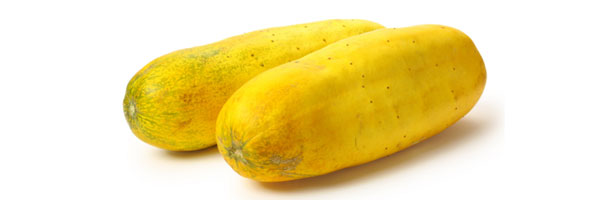
Its flesh is mixed with a sweet iced drink and is very refreshing for breaking the fast.
Mangoes
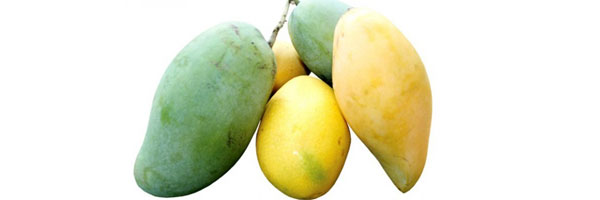 Mangoes (mangga) are seasonal fruits most plentiful during the months of November, December and January. There are several varieties of mango, the most delicious being mangga harum manis, which means fragrant and sweet. The skin is green while the flesh inside is bright orange. Other varieties are mangga gedong, mangga golek, mangga Indramayu and mangga manalagi. Beware the mangga kueni, or the smelly mango! Peel off the skin of the mango with a sharp knife, cut the flesh from the stone and cut into chunks, or you can also cut off a cheek of the unpeeled mango, cut the flesh through to the skin in a grid pattern and scoop out with a spoon.
Mangoes (mangga) are seasonal fruits most plentiful during the months of November, December and January. There are several varieties of mango, the most delicious being mangga harum manis, which means fragrant and sweet. The skin is green while the flesh inside is bright orange. Other varieties are mangga gedong, mangga golek, mangga Indramayu and mangga manalagi. Beware the mangga kueni, or the smelly mango! Peel off the skin of the mango with a sharp knife, cut the flesh from the stone and cut into chunks, or you can also cut off a cheek of the unpeeled mango, cut the flesh through to the skin in a grid pattern and scoop out with a spoon.
Guava
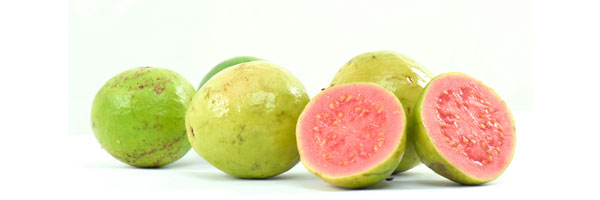 There are also several varieties of jambu. Jambu Air is water or rose apple, a small glossy fruit colored pink or scarlet, which is crisp and refreshing. Wash the fruit thoroughly, cut into quarters and remove the inner seed if there is one and any discolored parts, or else bite directly into the flesh. Jambu Bol is a different variety of rose apple that is larger, reddish and slightly striped and less juicy than jambu air. Jambu Mede or Jambu Monyet is the cashew fruit and has a reddish yellow juicy flesh. The cashew nut at one end of the fruit is usually harvested separately but may still be attached. Jambu Biji or Jambu Kelutuk (guava) is greenish yellow on the outside with tasty pink or yellow flesh and many tiny seeds in the center. Wash and eat the flesh or blend to make guava juice that contains lots of vitamin C.
There are also several varieties of jambu. Jambu Air is water or rose apple, a small glossy fruit colored pink or scarlet, which is crisp and refreshing. Wash the fruit thoroughly, cut into quarters and remove the inner seed if there is one and any discolored parts, or else bite directly into the flesh. Jambu Bol is a different variety of rose apple that is larger, reddish and slightly striped and less juicy than jambu air. Jambu Mede or Jambu Monyet is the cashew fruit and has a reddish yellow juicy flesh. The cashew nut at one end of the fruit is usually harvested separately but may still be attached. Jambu Biji or Jambu Kelutuk (guava) is greenish yellow on the outside with tasty pink or yellow flesh and many tiny seeds in the center. Wash and eat the flesh or blend to make guava juice that contains lots of vitamin C.
Duku
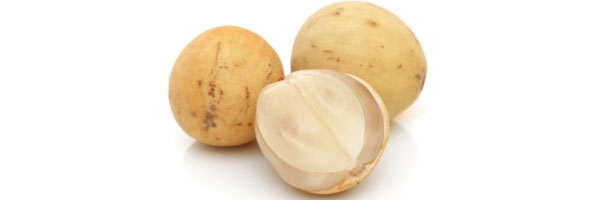 Duku or Langsat is available for only a short season each year and the best ones come from Palembang in South Sumatra. The duku is a small round fruit with thin yellowish brown skin that can be peeled off to reveal white semi-transparent segments of sweet flesh. The smallest segments have no seed while the larger ones have a soft seed that is not eaten.
Duku or Langsat is available for only a short season each year and the best ones come from Palembang in South Sumatra. The duku is a small round fruit with thin yellowish brown skin that can be peeled off to reveal white semi-transparent segments of sweet flesh. The smallest segments have no seed while the larger ones have a soft seed that is not eaten.
Manggis
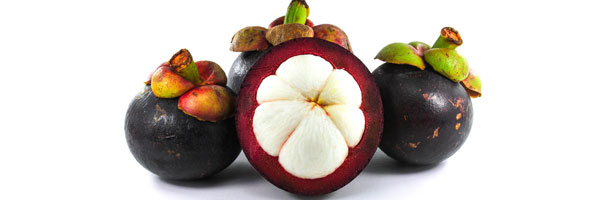 Manggis or mangosteen is quite difficult to eat but well worth the effort. It is a medium sized fruit slightly smaller than an apple with a brownish purple hard outer skin and a green calyx. Break or cut through the skin taking care not to get the purple juice on clothing or tablecloth, as it will stain. Inside you will find segments of soft white flesh with a very delicate flavor. It’s easiest to remove them with a small fork. The larger segments may have a soft seed that is discarded. The flower-shaped raised marks at the base of the fruit correspond to the number of segments contained inside.
Manggis or mangosteen is quite difficult to eat but well worth the effort. It is a medium sized fruit slightly smaller than an apple with a brownish purple hard outer skin and a green calyx. Break or cut through the skin taking care not to get the purple juice on clothing or tablecloth, as it will stain. Inside you will find segments of soft white flesh with a very delicate flavor. It’s easiest to remove them with a small fork. The larger segments may have a soft seed that is discarded. The flower-shaped raised marks at the base of the fruit correspond to the number of segments contained inside.
Belimbing
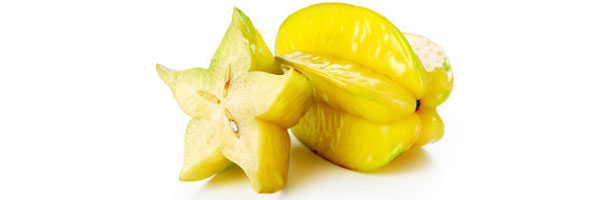 Belimbing, the star fruit or carambola, is believed by many Indonesians to have qualities promoting good health. It is a pale yellow fruit with ridges that form a star shape when the fruit is sliced across. Belimbing is not very sweet but juicy and looks decorative on a platter with other sliced fruits. Wash thoroughly; remove any discolored parts, slice and serve. It can also be made into juice.
Belimbing, the star fruit or carambola, is believed by many Indonesians to have qualities promoting good health. It is a pale yellow fruit with ridges that form a star shape when the fruit is sliced across. Belimbing is not very sweet but juicy and looks decorative on a platter with other sliced fruits. Wash thoroughly; remove any discolored parts, slice and serve. It can also be made into juice.
Kedondong
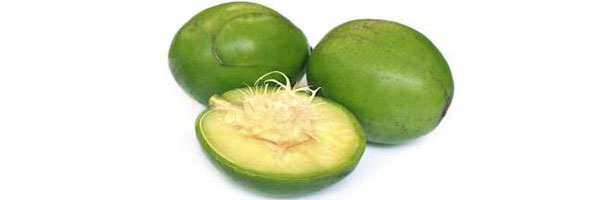 Kedondong or kedongdong is a kind of greenish yellow, fibrous, sour, plum like fruit also know as Spanish plum. Wash well and cut the flesh from the large stone. Raw kedondong is used in rujak (mixed fruits with sweet and hot sauce) and it is sometimes eaten cooked.
Kedondong or kedongdong is a kind of greenish yellow, fibrous, sour, plum like fruit also know as Spanish plum. Wash well and cut the flesh from the large stone. Raw kedondong is used in rujak (mixed fruits with sweet and hot sauce) and it is sometimes eaten cooked.
Markisa
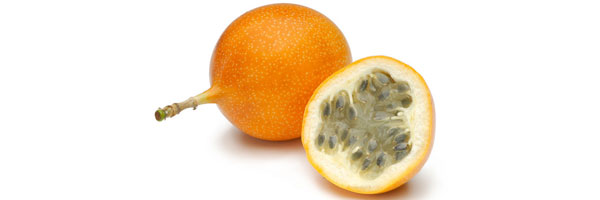 Markisa is a kind of passion fruit with a yellowish brown hard outer skin, occasionally becoming purple. The black seeds inside are enclosed in sacks of sweet juice that can be swallowed whole. Cut the markisa fruit in half and scoop out the pulp with a spoon. It can be used for desserts, added to fruit salad and is commonly made into a syrup that makes a refreshing drink when mixed with iced water or soda.
Markisa is a kind of passion fruit with a yellowish brown hard outer skin, occasionally becoming purple. The black seeds inside are enclosed in sacks of sweet juice that can be swallowed whole. Cut the markisa fruit in half and scoop out the pulp with a spoon. It can be used for desserts, added to fruit salad and is commonly made into a syrup that makes a refreshing drink when mixed with iced water or soda.
Salak
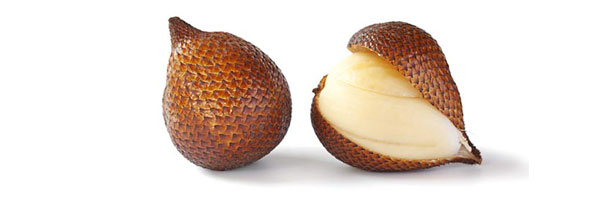 Salak or snakeskin fruit is generally not very appealing to the western palate. The shiny, dark brown, scaly skin can be peeled off and inside there may be two or three irregular sized segments. Rub off the membrane covering each segment and eat the crisp cream-colored flesh. Inside larger segments is a hard dark brown stone.
Salak or snakeskin fruit is generally not very appealing to the western palate. The shiny, dark brown, scaly skin can be peeled off and inside there may be two or three irregular sized segments. Rub off the membrane covering each segment and eat the crisp cream-colored flesh. Inside larger segments is a hard dark brown stone.
Sawo
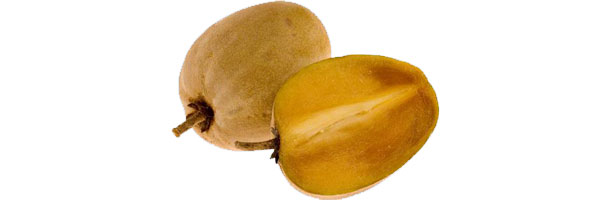 Sawo or sapodilla plum is a brown-skinned medium-sized fruit. Peel off the thin skin with a knife and eat the soft brown flesh inside. It is sweet with a flavor reminiscent of honey.
Sawo or sapodilla plum is a brown-skinned medium-sized fruit. Peel off the thin skin with a knife and eat the soft brown flesh inside. It is sweet with a flavor reminiscent of honey.
Sirsak
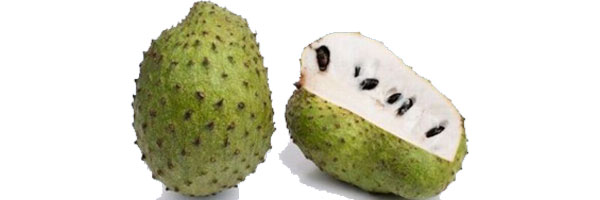 Sirsak or soursop, on the other hand is very sour as its name implies. It is a fairly large irregular shaped green fruit with sparse soft spines. Inside there is white pulp around black seeds. Usually the pulp and juice is scraped out and the seeds are removed. Sugar can be added to the pulp to be eaten fresh, or it can be made into sirsak juice.
Sirsak or soursop, on the other hand is very sour as its name implies. It is a fairly large irregular shaped green fruit with sparse soft spines. Inside there is white pulp around black seeds. Usually the pulp and juice is scraped out and the seeds are removed. Sugar can be added to the pulp to be eaten fresh, or it can be made into sirsak juice.
Srikaya
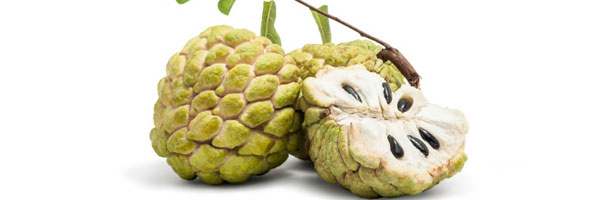 Srikaya or buah nona is known as custard apple or sweetsop. It is somewhat similar to but smaller than sirsak and has a sweeter custard-like flesh.
Srikaya or buah nona is known as custard apple or sweetsop. It is somewhat similar to but smaller than sirsak and has a sweeter custard-like flesh.
Rambutan
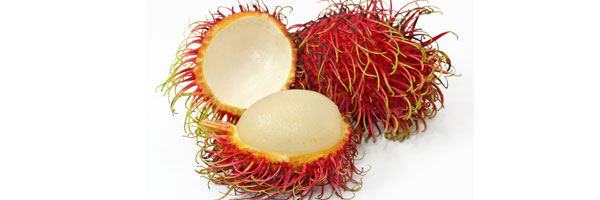 Rambutan, sometimes known as hairy lychee, is in season from November through February. The bright red or orange yellow spiny fruit is easy to spot at roadside stalls and stores and looks attractive in a fruit bowl. The soft spines resemble hair, hence the name rambutan, which means hairy. Several varieties of the fruit can be found, the most prized and tastiest one being the rambutan rapiah, which is yellowish with short hair. Rambutan is best eaten soon after being picked from the tree. Cut through the outer skin or break it with your fingers and eat the white flesh. In some varieties the flesh comes off the stone easily while in others it sticks to the stone.
Rambutan, sometimes known as hairy lychee, is in season from November through February. The bright red or orange yellow spiny fruit is easy to spot at roadside stalls and stores and looks attractive in a fruit bowl. The soft spines resemble hair, hence the name rambutan, which means hairy. Several varieties of the fruit can be found, the most prized and tastiest one being the rambutan rapiah, which is yellowish with short hair. Rambutan is best eaten soon after being picked from the tree. Cut through the outer skin or break it with your fingers and eat the white flesh. In some varieties the flesh comes off the stone easily while in others it sticks to the stone.
Kelengkeng
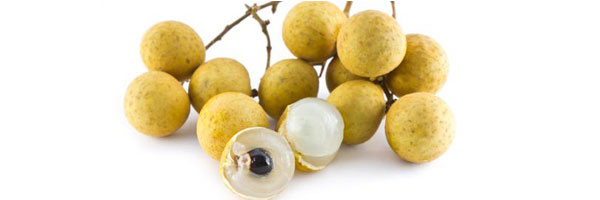 Kelengkeng or longan is another seasonal fruit similar to rambutan or lychee, but smaller with brown skin. The flesh has a refreshing sweet-sour flavor.
Kelengkeng or longan is another seasonal fruit similar to rambutan or lychee, but smaller with brown skin. The flesh has a refreshing sweet-sour flavor.
Nangka
Nangka or jackfruit is the giant of Indonesian fruits, often measuring 50 cm in length. Because it is so large it is usually sold in cut sections. Nangka has a tough, prickly skin and segments of firm yellow flesh. It has a strong smell and flavor. Nangka that is not yet ripe is often cooked as a vegetable in some Indonesian dishes.
Cempedak
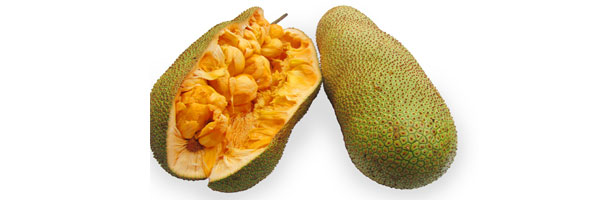 Cempedak is similar to nangka but smaller and more orange colored and with a much stronger smell and taste. It is not usually eaten raw but is fried in batter or cooked in cakes.
Cempedak is similar to nangka but smaller and more orange colored and with a much stronger smell and taste. It is not usually eaten raw but is fried in batter or cooked in cakes.
Durian
 Durian is considered by many Indonesians to be the king of fruits. It is a large greenish brown fruit with hard spines. The hard outer skin needs to be pried open with a large knife to reach the yellowish, soft and creamy textured flesh inside. The flesh is eaten direct from the stone. The strong smell can be overwhelming and many people find it disgusting, however for those who love the sweet taste of the durian the smell just arouses their appetite! Some supermarkets sell segments of durian in sealed plastic packs. Durian flavored ice cream or cookies are also popular.
Durian is considered by many Indonesians to be the king of fruits. It is a large greenish brown fruit with hard spines. The hard outer skin needs to be pried open with a large knife to reach the yellowish, soft and creamy textured flesh inside. The flesh is eaten direct from the stone. The strong smell can be overwhelming and many people find it disgusting, however for those who love the sweet taste of the durian the smell just arouses their appetite! Some supermarkets sell segments of durian in sealed plastic packs. Durian flavored ice cream or cookies are also popular.
Srikaya
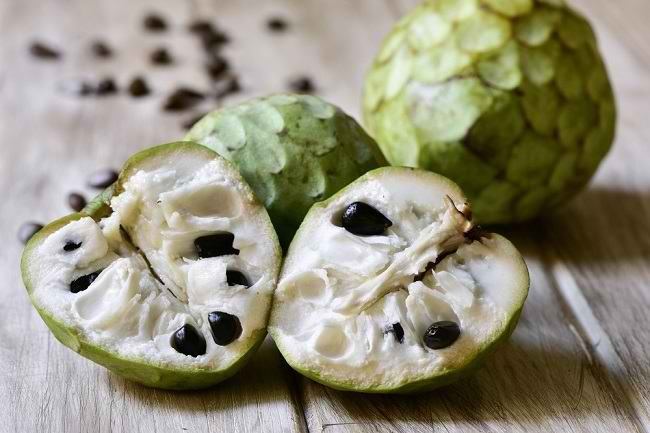
Indonesian people know this fruit by the name srikaya. However, its names can reach up to 50 names! Some of the popular ones are ‘sugar apple’, ‘custard apple’, and ‘sweetsop’. Srikaya originally came from the West Indies and America.
The flesh of this fruit is white with a sweet taste and creamy texture. Westerners liken it to the sweet taste of custard. Srikaya can be eaten immediately as a snack, but make sure not to swallow the seeds.
Buah Naga
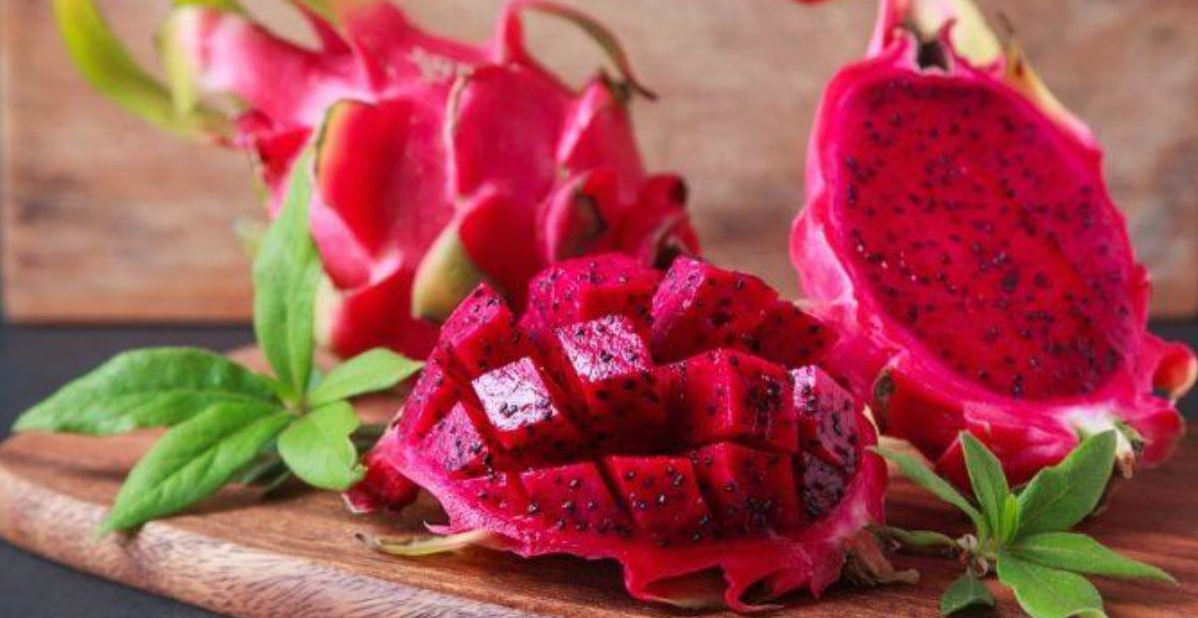
Dragon fruit or Buah Naga is an icon of exotic fruit in any country. Dragon fruit is categorized as an exotic fruit because of its fresh taste and again because it is not found in many countries. Most Asian countries have the resources to harvest dragon fruit. Dragon Fruit is suitable for growing in tropical climates, therefore in Indonesia Dragon Fruit is very popular.
Dragon fruit has 3 types, red dragon fruit, white dragon fruit, and yellow dragon fruit. The rarest in Indonesia is the yellow dragon fruit because it grows seasonally, as well as the white dragon fruit. Dragon fruit has red skin with protruding leaves and white/red flesh with small, black edible seeds. There’s no mistaking the fresh and sweet taste that makes dragon fruit the most famous exotic fruit in Indonesia.
Markisa
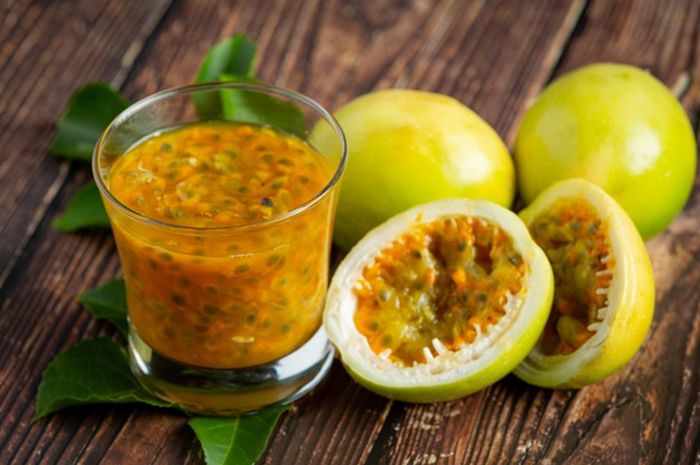
Markisa, also known as passionfruit may be better known for its syrup, but the fruit is no less delicious! Passion fruit is one of Indonesia’s exotic fruits which is most famous for its freshness and sweet taste of its flesh. If you find passion fruit in the garden, taste it quickly because the sweet taste will make you addicted.
Passion fruit harvested in Indonesia has a purple outer skin, with a skin that is easily brittle and the flesh of the fruit is yellowish. The seeds are clearly visible but can be eaten together with the flesh.
Delima
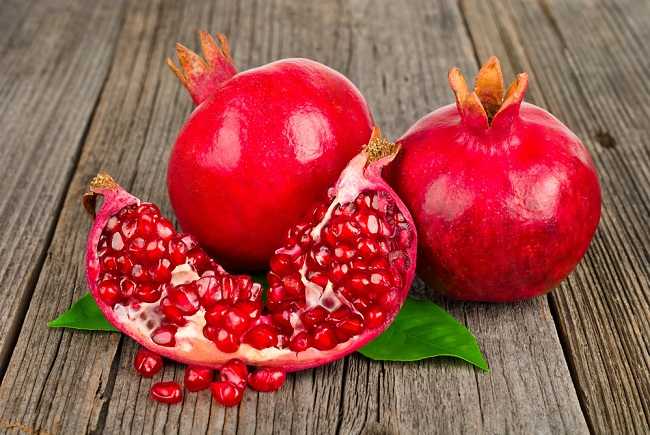
Delima or Pomegranate was a popular fruit in the past. In fact, when King Salman visited Indonesia, he had time to ask for this fruit in his cooking. Although it is rare, in general this fruit can be found and grows well in certain areas.
Despite its sour taste, this fruit is very tasty and useful. Pomegranates can improve the system and help improve digestion.
| Ara | Fig | Kelapa Kopyor | Brown husk on outside :gelatinous, lumpy inside, good beverage | |
| Anggur | Grape | Kelapa Muda | A young coconut Usually :the meat has a custard like consistency and is very tender | |
| Apel | Apple | Kesemak | Persimmon | |
| Arbai | Strawberry | Klengkeng (logan) | Bunches of small round brown dry-looking fruit :hard black seeds inside, very sweet | |
| Asam | Tamarind | Kolang Kaling | Young white meat of fruit of aren :tree from which palm sugar is derived | |
| Belimbing | sour star-shaped fruit :pale yellow and waxy; star-shaped if cross, good in fruit salad | Mangga | Mango | |
| Bisbul (buah mentega) | Ebony, butter fruit | Mangga arumanis | Classic mango shape :medium size, dark green and reddish or yellowish if ripe, very sweet | |
| Cempedak | Kind of jack fruit | Mangga Daging | Smallest mango, round, yellow when ripe, sweet sour | |
| Delima | Pomegranate | Mangga Gedong | Small, round, orange skin if ripe | |
| Duku (langsat) | Lanzon (meat-like rambutan) | Mangga Golek | Long, yellow-green if ripe, orange meat | |
| Durian | large, olong, covered with woody spike-like protrusions, extremely distinctive, pungent odor | Mangga Indramayu | Large, rouindish, green-yellow, sweet | |
| Prambozen (prambas) | Raspberry | Mangga Kueni | Green when ripe :rouindish, yellow meat, strong taste | |
| Gandaria | Small, round, dark green, very sour | Mangga Madu | Medium small, rouindish, sweet coarse texture | |
| Garbis | Round, large, light yellow, very bland | Manggis | Mangosteen :hard, red-brown skin, delicious white meat | |
| Jambu Air | Watery rose apple :pink, bell-shaped, sour | Markisa | Passion fruit :size of pomegranate, dark brown, orange pods inside, pressed juice | |
| Jambu Biji | Guava :light yellow-green, size of apple | Nanas | Pineapple | |
| Jambu Bol | Malay rose apple; red, crisp, tart | Nanas Bogor | Small, Juicy | |
| Jambu Monyet | Cashew nut fruit; tart-flavored meat | Nanas Palembang | Big, Juicy | |
| Jeruk | Citrus | Nanas Siantar | Small, Sweet, Dry | |
| Jeruk Bali | Pomello :largest citrus, tastes and looks like huge grapefruit, but sweeter | Nangka | Jack fruit :large, green, oblong fruit containing long yellow pods; sweet, perfume taste | |
| Jeruk Garut | Tangerine :loose-skinned, often sour | Buah Nona | Sweetsop :red-pink in color and sweet | |
| Jeruk Gripfruit | Grapefruit :green skin, often sour | Pepaya | Papaya :yellow meat | |
| Jeruk Mana Lagi | Similar to Jeruk Bali but more conical in shape | Papata Semangka | Orange-pink meat | |
| Jeruk Manis | Indonesia Orange | Pisang | Banana | |
| Jeruk Nipis | Lime | Jantung | The red-purple flower of the banana | |
| Jeruk Pandan | Similar to Jeruk Bali, pink meat | Tandan | The entire stalk of banana | |
| Jeruk Peres | Tangelo; orange skin, sour | Sisir | One ‘hand’ or bunch of banana | |
| Jeruk Purut | Dark green, size of a lime, peel grated for cookies | Pisang Ambon | The Chiquita banana, eaten raw | |
| Jeruk Sambal (limau) | Smallest citrus; distinctive fragrance | Pisang Bali | Pink peel | |
| Jeruk Siam | Tangerine | Pisang Batu/Pisang kelutuk | Bitter :seeds white when young, black when ripe, skin gren, used in rujak, Indonesia fruit salad | |
| Jeruk Sitrun | Lemon | Pisang Hijau | Fried or eaten raw; skin green when ripe | |
| Kecapi | Yellow, handball-size fruit with slightly downy thick skin. Delicious white meat in segments with strawberry-like fragrance | Pisang Kapas | Squat, angular, cooked or fried | |
| Kedodong | Spanish plum :green when young, yellow brown when ripe, oval, egg size, sharp taste | Pisang Kapok | Squarish, rough skin, cooked or fried | |
| Kelapa | Coconut | Pisang Mas/Pisang Lampung | Very small, sweet, eaten raw | |
| Kelapa Biasa | Ordinary Coconut | Pisang Nangka | Large, green when ripe, steamed or fried | |
| Kelapa Gading | Outside yellow, cooked or eaten raw | Pisang Raja | Sweet :raw or fried | |
| Kelapa Hijau | Green outside :light purple inside; its juice is mixed with honey for fevers and measles | |||

